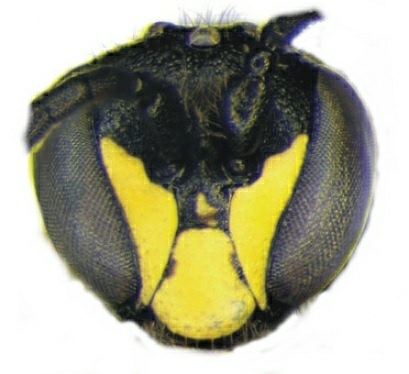Hylaeus in Hawaii

Hylaeus in Hawaii |

|
Hylaeus makahaIslands: OahuLocations: Oahu - (Manuwai, Kaala massif, Waianae) Habitats: Mesic Forest Plants: Chamaesyce Xerces: No info. Insects of Hawaii: Keys to H. kona in Daly & Magnacca (2003) based on the yellow median plate and shape of the antennal scape, but is distinguished from that species by the short setae of the scutum and vertex, less extensive yellow markings, shape of S7, and narrow malar space. On Oahu the only similar species are H. mana and H. mamo; the former has the median plate unmarked and very different genitalia, while the latter has much more extensive yellow marks on the head. The males and females are highly dimorphic; males lack the striking orange-red metasoma of the female. For full description of the female, see Magnacca (2011). Insects of Hawaii Volume 17 
UH/DOD: This Oahu endemic species, related to H. kona, was only described in 2011 (Magnacca 2011). The first collection was of a single female from Makaha Valley on the leeward side of the Waianae range in September 2009, and in August 2010 more were found at the same site, along with another new species, H. ulaula, and the candidate species H. kuakea (itself only discovered in 1997 and described in 2003). Visits to the site during this survey found most of the mature individuals of the endangered plant they were primarily collected on, Euphorbia rockii, dead (presumably from drought stress) and no bees at all. However, a single individual was collected in the eastern Kaala Natural Area Reserve while sweeping vegetation during poor weather, the first male ever found. A second collection was made in Waianae Valley, on Euphorbia multiformis about 1.2 km from the original Makaha site, with both males and females together (Figure 9). While Euphorbia olowaluana has been a productive species for bee collecting on Hawaii, the smaller species on Oahu have rarely been found with bees. Hylaeus near military lands 
Other: |

|